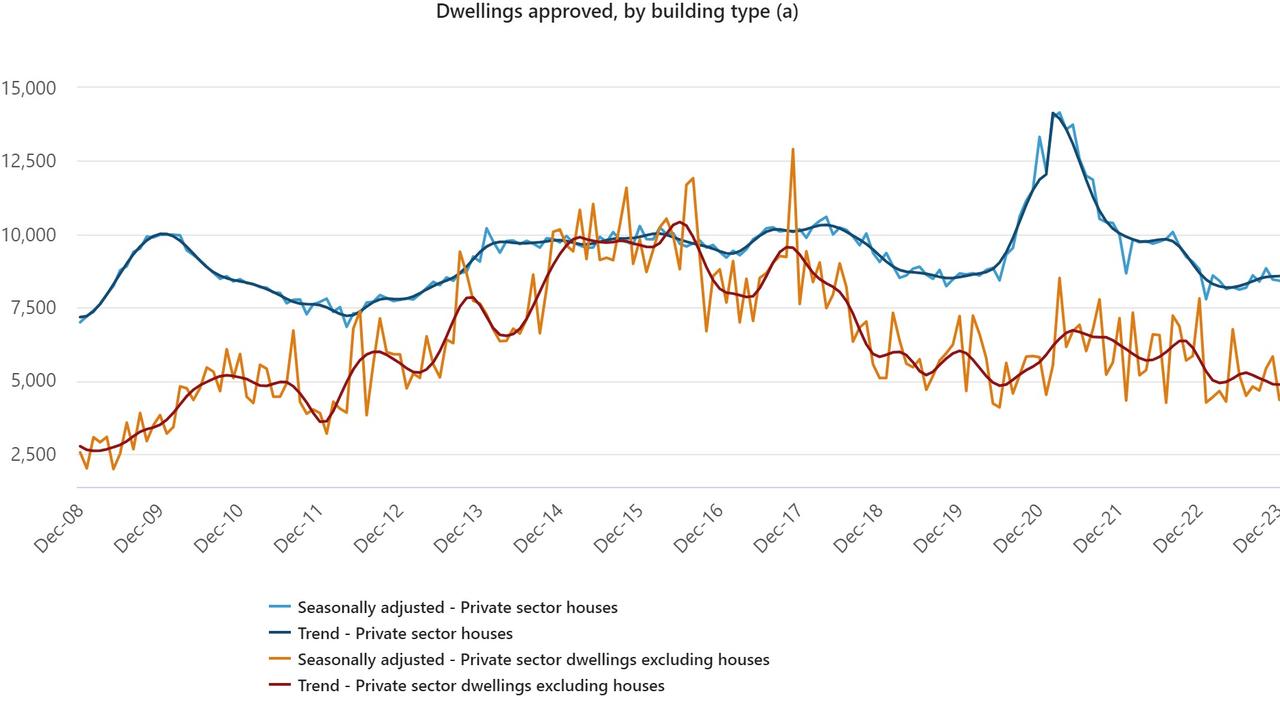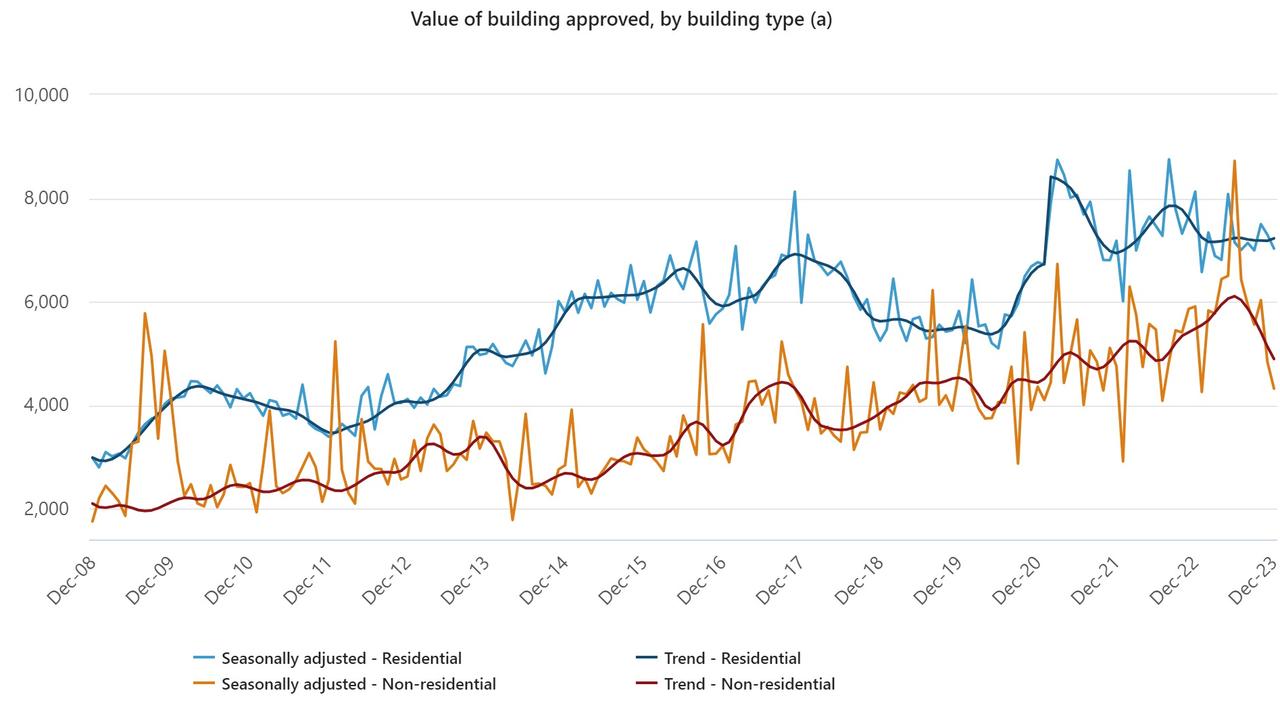ABS data shows housing approvals and building values falling
The latest data from the Australian Bureau of Statistics has revealed some grim news for housing approvals and values.
Housing approvals have fallen and the value of new buildings has also dropped, according to the latest data from the Australian Bureau of Statistics.
The December 2023 seasonally adjusted estimate indicates total dwellings approved fell 9.5 per cent to 13,085 after a 0.3 per cent rise in November.
Private sector houses fell 0.5 per cent to 8416, following a 4.3 per cent decline in November, while private sector dwellings excluding houses plummeted 25.3 per cent to 4354 after a 7.5 per cent increase in November.

Across the country, approvals for total dwellings were mixed.
Falls were recorded in Victoria (-18.4 per cent), South Australia (-11.8 per cent), and Tasmania (-2.7 per cent), but increases were recorded in Queensland (8.2 per cent), Western Australia (7.9 per cent), and NSW (2 per cent).
Approvals for private sector houses fell in SA (-5.3 per cent), NSW (-2.6 per cent), and Queensland (-0.4 per cent), while rises were recorded in WA (2.2 per cent) and Victoria (1.2 per cent).
The value of total building approved fell 6.4 per cent, following another drop of 10.4 per cent in November.
Total residential building values fell 3.7 per cent, including a 3.8 per cent decrease in new residential buildings to $6.03bn and a 2.8 per cent fall in alterations and additions.
For non-residential buildings, it was a 10.6 per cent drop to $4.32bn after a 19.8 per cent fall in November.

This week, the Reserve Bank of Australia kept interest rates on hold at 4.35 per cent.
But the RBA said it could not rule out future rate hikes to keep inflation, which sits at 4.1 per cent, in check.
“While there are encouraging signs, the economic outlook is uncertain and the board remains highly attentive to inflation risks,” the RBA said in a statement this week.
“There also remains a high level of uncertainty around the outlook for the Chinese economy and the implications of the conflicts in Ukraine and the Middle East.
“Domestically, there are uncertainties regarding the lags in the effect of monetary policy and how firms’ pricing decisions and wages will respond to the slower growth in the economy at a time of excess demand, and while the labour market remains tight.
“The outlook for household consumption also remains uncertain.”




